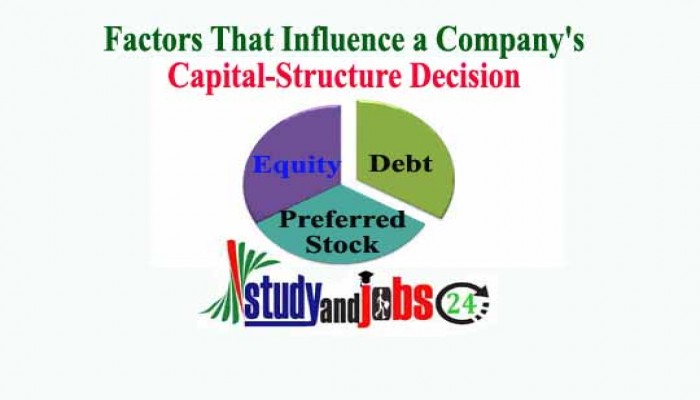
Zulfiqar Hasan
Capital structure refers to the way a corporation finances its assets through some combination of equity, debt, or hybrid securities.
A firm's capital structure is then the composition or 'structure' of its liabilities.
Factors That Influence a Company's Capital-Structure Decision
a. Business Risk
b. Company's Tax Exposure:
c. Financial Flexibility
d. Management Style
e. Growth Rate
f. Market Conditions
Business Risk:
Excluding debt, business risk is the basic risk of the company's operations. The greater the business risk, the lower the optimal debt ratio.
Company's Tax Exposure:
Debt payments are tax deductible. As such, if a company's tax rate is high, using debt as a means of financing a project is attractive because the tax deductibility of the debt payments protects some income from taxes.
Financial Flexibility :
Financial flexibility is essentially the firm's ability to raise capital in bad times. It should come as no surprise that companies typically have no problem raising capital when sales are growing and earnings are strong. The lower a company's debt level, the more financial flexibility a company has.
Management Style:
Management styles range from aggressive to conservative. The more conservative a management's approach is, the less inclined it is to use debt to increase profits. An aggressive management may try to grow the firm quickly, using significant amounts of debt to ramp up the growth of the company's earnings per share (EPS).
Growth Rate:
Firms that are in the growth stage of their cycle typically finance that growth through debt by borrowing money to grow faster. The conflict that arises with this method is that the revenues of growth firms are typically unstable and unproven. As such, a high debt load is usually not appropriate.
Market Conditions:
Market conditions can have a significant impact on a company's capital-structure condition. Suppose a firm needs to borrow funds for a new plant. If the market is struggling, meaning that investors are limiting companies' access to capital because of market concerns, the interest rate to borrow may be higher than a company would want to pay.
Value of the Firm
The value of a firm is defined to be the sum of the value of the firm’s debt and the firm’s equity.
V = B + S
Here, B = Market value of the firm debt
S = Market Value of the Equity
V= Value of the Firm
If the goal of the management of the firm is to make the firm as valuable as possible, the the firm should pick the debt-equity ratio that makes the pie as big as possible.




